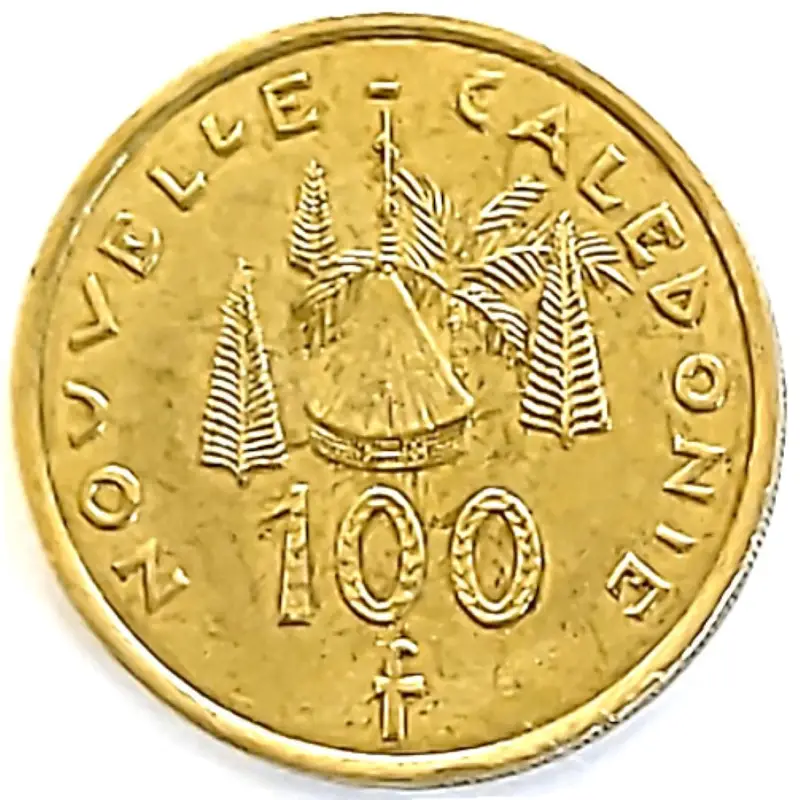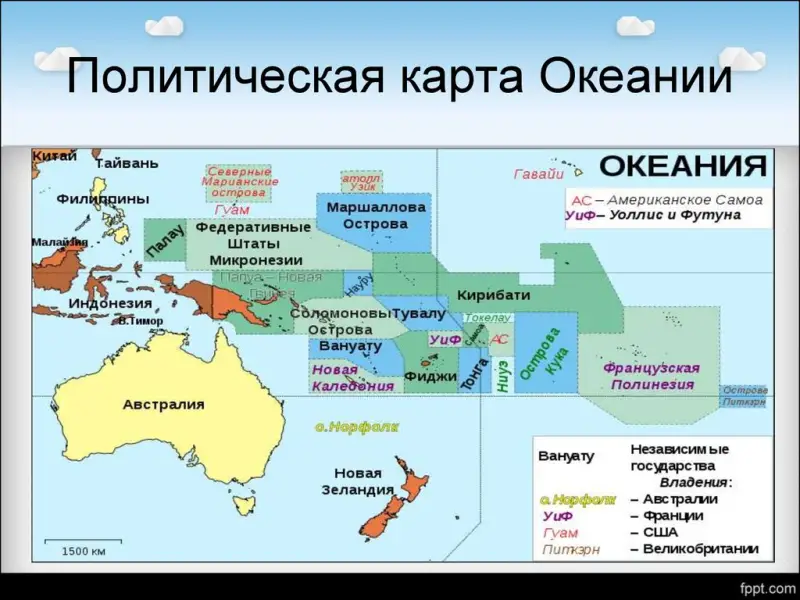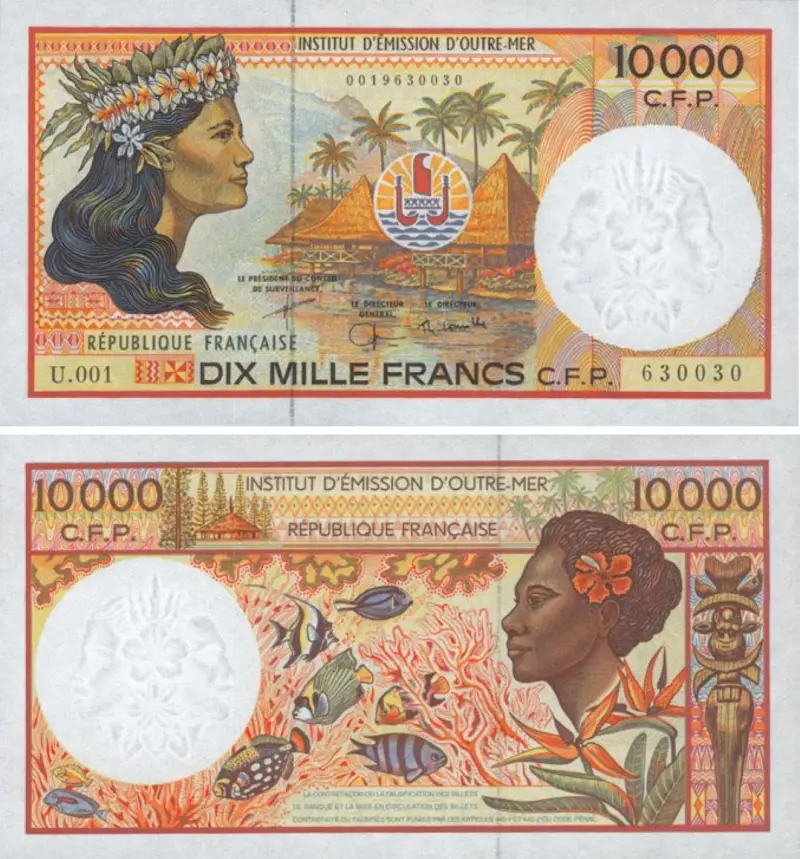France has been without a franc for a long time, francs are for non-French people

New Caledonia – where is it?
By mid-April 2024, the French Parliament finally approved amendments (2023) to the overseas status of New Caledonia. Providing, among other things, for the further preservation and use of the New Caledonian franc in domestic French and international payments.
In the early 90s of the last century, when a single currency was introduced into the EU - the ECU, which since 1999 has been relatively successfully transformed into the euro, Paris left the New Caledonian franc in circulation. Its official abbreviation is “Franc colonies françaises du Pacifique” - CFP).
This pseudo-franc, or rather quasi-franc, was established back in 1946 and is still used in both internal and external settlements in France. And not only with its vast Pacific territories (New Caledonia, Wallis-Futuna, Polynesia), but also with other countries. Especially with sanctioned ones.
Back in the second half of the 80s, many French politicians and experts pointed out that the planned EU single currency would face considerable difficulties. It may be subject to frequent and strong fluctuations in relation to all foreign currencies and is prohibited (or limited) in settlements with sanctioned countries.
These factors, like the ECB’s monetary policy, will not always coincide with the foreign policy, domestic and foreign economic interests of France. That is why it is necessary to preserve the circulation of the New Caledonian franc, issued by its national bank.
It is clear that this pocket bank for France naturally directly or indirectly supports the exchange rate of this currency and thereby its solvency. The very introduction of this currency since 1946 was due to the deteriorating relationship between the West and the USSR and, in this regard, quite possible economic sanctions against the USSR and its allies.
Sanctions against the USSR, which no one remembers now, were introduced with France in mind by the “collective” West since 1947. They were finally formalized in the fall of 1949 within the framework of the well-known NATO “COCOM”. Subsequently, from 1950–1951, these sanctions extended to the PRC.

In the regulated franc area
However, with the help of the New Caledonian franc (NC), France, where the French franc itself circulated until 1999, was less dependent on these sanctions. For this purpose, the West African franc and the Central African franc, in force since the late 40s and early 50s, were also used (in total, there are 14 countries in the franc zone today).
Moreover, both the issue and the solvency of such currency are still regulated by the French National Bank. It is also important that the foreign (“overseas”) territories of France, as well as other Western countries - the USA, Great Britain, Denmark, the Netherlands - are often not mentioned as participants in sanctions against any countries.
This, in turn, facilitated and continues to facilitate the use of the currencies of these territories in the international payments of metropolitan countries. According to available estimates, the share of New Caledonian, West African and Central African francs in the 50s - early 80s. in mutual settlements between France and the USSR reached 20–25%, with the socialist countries of Eastern Europe (including Albania and the GDR, excluding Yugoslavia) - over 25 and about 30%.
The use of supposedly non-convertible currencies in settlements with the PRC, Mongolia, the DPRK and the Democratic Republic of Vietnam was at the same level. In general - about 30 and about 20%. In this regard, the unique official visit of French Vice President Pierre Messmer to Pyongyang in September 1970 is noteworthy.
It was almost not advertised by both parties, but it was then that they agreed to continue mutual settlements in various currencies. Is it any wonder that later New Caledonian, like African francs, began to be actively used in mutual settlements with the sanctioned South Africa, Southern Rhodesia, Libya, Sudan, Iran, Cuba, and Myanmar.
Money in an envelope
All this is due, among other things, to the direct conversion of these currencies into euros, as well as into US dollars, Australia, New Zealand, Canada, Hong Kong, Singapore, into the Swiss franc and back.
A characteristic touch: trade and other mutual settlements between France and the far from pro-Soviet Stalinist Albania in the 50s–80s were carried out mainly in the same currencies. Tirana was included in NATO sanctions lists, but these sanctions were “soft” due to the Albanian-Soviet and Albanian-Yugoslav confrontation, beneficial to the West.
Therefore, the then lek of Albania was freely converted with the mentioned “pro-French” francs. And since the 60s, New Caledonian, West African and Central African francs have been actively used in China’s mutual settlements not only with France, but also with the countries of Oceania and members of the West and Central African franc zones.
America can wait
And this, in turn, strengthens the long-standing partnership between Beijing and Paris in these regions. But the Sino-French colonial alliance in the former French regions of Africa has been especially characteristic since the mid-60s of the last century. It is important that it is aimed quite clearly against American expansion.
However, the New Caledonian franc has been used more actively since the 1990s in mutual settlements between France and Taiwan. According to current estimates, the total share of New Caledonia in mutual settlements between France and APEC member countries now exceeds 30%, and in general with all countries of the Pacific Rim (including Latin American) – at least 35%.

The same French currency is used in mutual settlements with sanctioned Russia and Belarus, but there is no exact data on the share of New Caledonia in this segment. But there is indirect confirmation of the benefits and validity of these mutual settlements.
And it consists in the fact that the exchange rate of the New Caledonian franc is still quoted by the central banks of Russia and Belarus. Let us give as an example the rates of little-known currencies, according to the Russian Central Bank as of April 15 of this year, 2024:
1 (one) French Pacific franc, New Caledonia (CFP), 1 XPF = 0,8366 Russian ruble [RUB – Russia].
1 (one) Russian Ruble, Russian Federation, [RUB – Russia], 1 RUB = 1,1954 French Pacific Franc (CFP) [XPF – New Caledonia].
Information